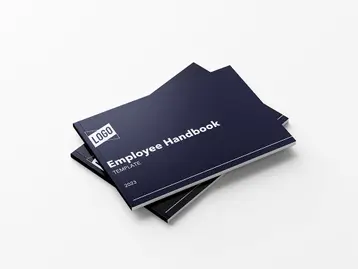
A few things to keep in mind before terminating an employee for poor performance.
Here's what you need to know:
- Be prepared with documentation.
- Write a termination letter.
- Schedule a meeting.
- Keep the meeting short. Don't be tempted to apologize, give a second chance or discuss personal traits.
Severing an employee from the payroll is never an easy task for business owners or HR professionals.
It can be even more challenging when the employee is being let go for performance issues. Despite (hopefully) repeated attempts to correct the problem, the staffer just doesn’t get it or isn’t interested in performance improvement. When disciplinary action has failed, the only real choice for the business is employee termination.
In too many cases, employers put off termination of an employee who isn’t performing up to standards. When employees’ performance improvement plans fail, managers must evaluate why. If the employee is able to meet assigned goals, but chooses not to, they leave no option but dismissal. Sometimes emotions get in the way. Sometimes personalities clash. Whatever the history, relationship or other dynamics, firing someone for poor performance can be awkward at best and distressing at worst.
If no amount of training or correction leads to improvement, it’s up to management to follow through with a fair dismissal. It’s in the best interest of the team and the company to sever the employee from his or her position correctly. It should be in a way that doesn’t violate the employee’s rights or result in a wrongful termination lawsuit.
What are the Barriers to Termination?
Keep in mind that we’re not talking about how to let an employee go due to lack of work available. That can happen with seasonal jobs and due to internal or external circumstances that impact the organization by no fault of the employee. We’re talking about how to let go of an employee who is not performing as needed on the job. This is the difference between layoffs and firing.
Terminating an employee for poor performance is often more complex than laying someone off. In fact, some managers may cringe at the mere thought of firing someone. They may worry that the employee will take it too personally or have a difficult time finding other work. They may also be concerned they will be accused of wrongful termination. It’s “easier” to keep ignoring the performance issue in the hopes that it will get better.
But ignoring the problem doesn’t make it go away. Typically, avoidance just makes a problem worse and its effects more pervasive. And when an employee is allowed to continue underperforming, there’s no incentive to improve. Ongoing underperformance within the workplace can lead to frustrations and resentments among coworkers. Longer-term, this can even lead to increased employee turnover.
Granted, involuntary termination is usually not the plan. New hires are brought on board with the intention they will become a long-term employee. But when termination due to poor performance becomes necessary, fear of making an unfair dismissal or wrongful dismissal isn’t helping the company or the employee. Those fears can be alleviated if the proper steps are taken to sever the employment contract.
When there is an issue with job performance, and no amount of employee performance management results in improvement, keeping the employee on staff is not an option. It’s a mistake to avoid firing a poor performer for two reasons.
1. It’s unfair to other staff members
By allowing an underperforming employee to continue doing less, you’re sending a message to other employees. “We tolerate subpar employee performance from this staff member, your hard work is not recognized and appreciated.” That can quickly take a toll on morale and engagement and may lead to turnover.
2. The employee isn’t right for the job
They know they’re not cutting it — and wonder when others will notice and decide to do something about it. These are employees who dread their performance review, and for good reason.
The stress of knowing they’re not up to the task only further exacerbates the problem, making it harder for them to produce. It’s unfair to keep someone in a job where every performance evaluation is anxiety-inducing. Workers need to be in a position where they can thrive. Yours simply isn’t the right fit.
If the best days are when the potentially departing employee calls in sick, the problem needs to be addressed. Consider how much better work will be performed and the team will benefit if a replacement is made who can get the job done.
The problem of an underperforming employee doesn’t go away, no matter how long you ignore it. Whether you hired the wrong person, they misrepresented their skills and abilities or it’s just not working out, it’s a best practice to deal with underperforming employees quickly and effectively.
How to Terminate an Employee for Poor Performance
Just how to fire someone for poor performance can be considered an art of sorts. What to say when terminating an employee for poor performance can be as important as how well-prepared you are to do it. The least difficult termination meetings should begin long before you sit down with the staff member. Having all the information you need at hand and a general idea of what you’ll discuss helps HR professionals and managers to navigate the meeting with as much ease as possible.
Termination paperwork
Be prepared with as much documentation and paperwork as possible before an employment termination. It’s best practice to have a termination process guide or template for how to let someone go for poor performance. The easiest and most effective termination meetings are held when the prep has been done in advance.
If there are records of warnings or write-ups that outline the progressive discipline or requests for corrective actions, have them readily available. And if the performance issue revolves around customer complaints, returns or errors, have that data on hand as well.
Have COBRA information ready to issue to the employee if they were covered under any employee benefits plans.
Have a separation checklist ready listing company property that will need to be returned (keys, uniforms, computers, etc.) at the termination meeting.
In most cases a terminated employee is not eligible to receive a severance package or severance pay but may be eligible for unemployment benefits. Depending on where you do business, if the employee has been separated for cause they may not receive the benefit.
Check with your local unemployment insurance office for details. Some employers provide a termination letter and final paycheck to the staff member during the termination meeting.
Schedule the meeting
It’s a cruel but not uncommon practice for a manager or business owner to notify the employee to stop by HR or the owner’s office at the end of the day.
The result: a day of stress and speculation about the meeting that will likely spill over to coworkers. The best way to manage scheduling is not to. When you’re ready to speak to the employee, ask their manager to bring them to your office, or go collect them yourself.
Hold the meeting in private immediately, going through the necessary notifications and paperwork and escort them off premises quickly, quietly and with dignity.
As tempting as it may be to fire an employee via phone or text message, it’s best to communicate face-to-face.
What to discuss when terminating an employee for poor performance
Your meeting should be short and to the point. There’s no reason to beat around the bush. Let the employee know they’re being let go effective immediately because of poor performance or policy violations.
Briefly review the reason for the termination, including where attempts to improve performance or to correct policy violations have failed. Let the staff member know a decision has been made that it’s no longer acceptable and they’re being let go.
The employee may have questions, and it’s fine to respond, but don’t let the discussion get lengthy. Overall, a termination meeting should last about 20 minutes.
Don’t let employees embarrass themselves with promises to reform or do better. Let them know the decision has been made and it’s not up for negotiation. Then move on to COBRA notifications and/or property checklists and let the employee collect their personal effects before they leave.
What not to say when you’re terminating an employee for poor performance
Don’t apologize
You may feel sorry for the employee, be sorry you hired them or be sorry they didn’t work out. But don’t verbalize the sentiment. Apologies imply that you are sorry they’re being fired, which undermines your position.
The employee should have been warned sufficiently to correct behavior that could lead to their dismissal. Their choice not to do so is not your responsibility.
If they’re being let go because of a single, serious violation of company policy, they should know that immediate termination would be the result. Terminating an employee is a business decision, not an emotional exercise. Apologies are unnecessary and can be easily misinterpreted.
Don’t discuss personal traits or characteristics
If you’ve begun to think in terms of how to get rid of an employee who is not performing vs. how to simply sever the relationship, beware of letting their personality or other personal attributes influence the conversation. Commenting on personal traits or characteristics of an employee can open you up to a wrongful discrimination lawsuit. Stick instead only to items that breach the contractual employment relationship.
For example, if an employee can’t manage to lift the required amount specified by the job description (and they haven’t asked for an accommodation), then this could be grounds for dismissal because they couldn’t perform the work.
But if you inform the employee that a man or a younger person could do the work better, faster or more easily, you may be opening yourself up to an unlawful dismissal or unlawful termination claim.
They’re being fired because they can’t meet the requirements of the job — nothing else should have factored into the decision. Keep the conversation about the work, never about the worker.
Don’t compare to coworkers
What other workers do is irrelevant. The employee you’re dismissing was hired to meet the expectations of the job and is being let go because they did not.
Discussions about how Linda does it faster or James always gets to work on time are counter-productive. They’ll only lead to excuses and attempted justifications: She has been here longer; he doesn’t have to travel as far.
Comparisons are irrelevant. This employee isn’t meeting the minimum requirements of the job and is being terminated. The performance of colleagues should not be part of the discussion.
What Happens When Emotions Run High During the Firing?
If you suspect the employee may not be able to control themselves, be ready with backup or security. Occasionally it’s the employee you least expect who gets irate. It might be a best practice to always have help at hand.
Having a second human resource management professional, the manager or security (outside the door) present lets employees know that unprofessional behavior is not welcome and will not be tolerated.
Pulling off the Bandage When Terminating an Employee
For many small to medium-sized business owners, terminating an employee is the worst part of the job. Instead of putting it off, consider how much easier work will be when the employee is no longer causing problems or disruptions. When a new staffer comes onboard and keeps up with performance needs, the team and the company will benefit.
Conducting a termination meeting professionally can make a difficult situation easier to manage. Investing a small amount of time into preparation could mean the workplace will be more productive and pleasant in the future.






